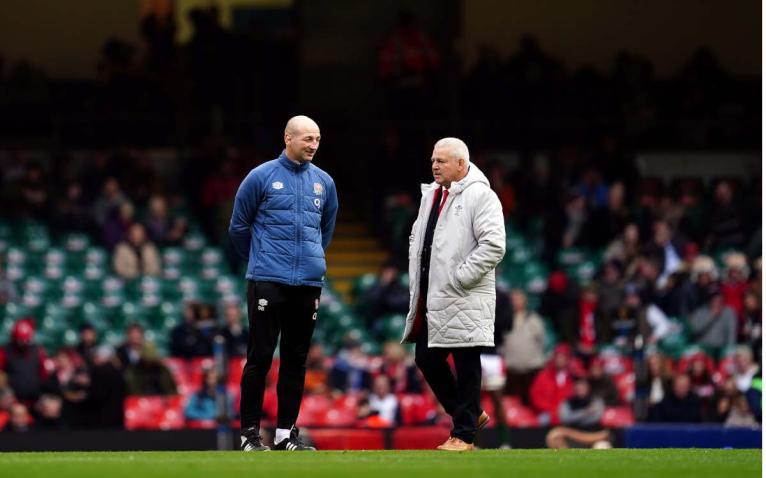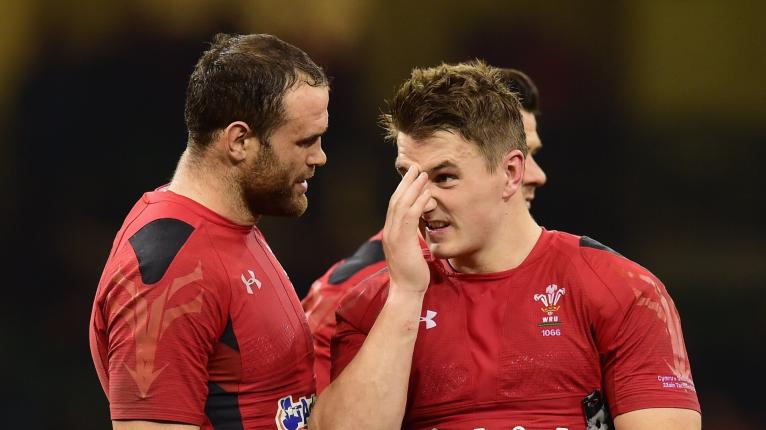Napoleon Bonaparte had nothing on the English Premier League. The fabled ‘hundred days’ which marked the triumphant return of the French military genius from the isle of Elba, his defeat at Waterloo and ultimate exile on the island of Saint Helena in the South Atlantic, is small change by Premiership standards.
The merry-go-round of managerial talent has become so commonplace in English Soccer that it is no longer remarkable. The head of Southampton’s Nathan Jones is merely the latest to roll. Jones was appointed on November 10th 2022 and sacked on February 23rd 2023 by the Saints; his tenure lasting a mere eight League matches and brusquely ending after only 94 days in the job.
Jones’ solitary win was against a team which sacked its own boss only nine days later. Frank Lampard’s huge media profile could not save him from the executioner’s block either. His tenure expired less than 12 months after his appointment by Everton.
The demand for instant success has become epidemic in football, and now there are signs that the virus appears to be spreading to Rugby. Eddie Jones was sacked by the RFU last December, only nine short months before the start of his speciality competition, the World Cup. Two days earlier, Wayne Pivac had lost his job with Wales.
Just over one month later, Jones was back in his homeland, and back as head coach of the Wallabies, who are a good chance to meet his old charges at the quarter-final stage of the World Cup. Pivac was replaced by the man he had succeeded, New Zealander Warren Gatland. Plus ça change, plus c’est la même chose, as the saying goes.

While such appointments can take the pressure off the administrators that make them, it is more often than not a quick fix, and the long-term consequences are far murkier.
At the end of the Six Nations tournament last weekend, the wisdom of the late coaching shifts in England and Wales was under more searching scrutiny than it had been at the start. They were the big losers in the competition, with Scotland nudging ahead of both countries on the development graph. Ireland and France were only visible by the dust trail they left, crossing some distant horizon.
The average scoreline in the games between Ireland and France on the one side, and England and Wales on the other was 40 points to 16. Between them, Les Bleus and the men from the Emerald Isle crossed the whitewash no fewer than 20 times in those four matches, dotting down at an average of five tries per game.
The Press Association ‘team of the tournament’ named after Saturday’s last round contained 11 French or Irish starters, with not a single Welshman or Englishman in sight.
With so little time for new coaching principles to embed, and trial-by-fire before the serious stuff starts in September, it is the stat in the ‘tries against’ column that ought to concern English and Welsh supporters the most. They may have time to build a sophisticated attacking structure before the World Cup, but they darn well need to be able to defend.
If Borthwick’s England and Gatland’s Wales cannot limit the scoring power of their top-tier opponents, they are going nowhere at the World Cup in France.
Ironclad defence is the signature of the new head coaches on both sides of the Severn. The engine of Warren Gatland’s success with both Wasps and Wales in his first incarnation was Shaun Edwards, now committed to France on a long-term deal.
The Wales head honcho has unearthed an Edwards tribute act – and maybe a whole lot more – in the shape of Mike Forshaw (who also started his League career at Wigan RLFC, just like the French mastermind), while Steve Borthwick has brought Leeds Rhinos legend Kevin Sinfield with him from Welford Road. It is fair to say both have a lot of work to do to find out what really works at Test level.
If Borthwick’s England and Gatland’s Wales cannot limit the scoring power of their top-tier opponents, they are going nowhere at the World Cup in France. Defence starts in the middle of the field – if an opponent can find a shortcut through the middle, they will not have to take more risks, make more passes, and employ greater attacking sophistication to get to the edges of the field.
Gatland’s Wales v1.0 were always blessed in this respect. They had Jamie Roberts and Jonathan Davies in the centres, and it was one of the best combinations in the world for the better part of a decade. Gatland made the controversial choice to select the pairing for the decisive third Test between the British and Irish Lions and Australia back in 2013, leaving out a player as stratospherically good as Brian O’Driscoll in the process. He was proved right, with the Lions running out comfortable 41-16 winners in the final game.
‘Foxy’ Davies was probably the best defensive centre in the world for a few seasons, making a series of faultless decisions in the criticial 13 channel, and his partnership with Roberts was the rock on which Gatland’s professional Welsh rugby cathedral was raised.

Fast forward to 2023, and what was a strength now looks like a chronic weakness. Gatland tried three different combinations during the Championship without conspicuous success: young Joe Hawkins and ex-wingman George North in the first two rounds, two 20-year-olds (Hawkins and Mason Grady) in rounds three and four, while he finished by fielding the most experienced partnership available (Nick Tompkins and North) in the final round against France in Paris.
For the time being, none of the pairings looks capable of reaching the foothills of what ‘Doc’ Roberts and Foxy achieved in a red jersey, let alone climbing to the summit of the mountain – even if there is clear scope for development with Grady and Hawkins.
Italy routinely split Wales right up the middle, in between their centres at the Stadio Olimpico in Rome:
Hawkins looks in towards the front decoy, Grady looks out towards the width of the Azzurri attack and Italian fullback Tommaso Allan splits the seam between the two. It was a consistent theme in the game, whoever was fulfilling the two roles for Gatland’s men:
In this instance, it is Grady defending as a 12 and getting pinned on the block, while fullback Liam William over-reads a play out the back at 13 and leaves an inviting hole for Paolo Garbisi to run through underneath him.
Perhaps the most damning example came on first phase from a second-half scrum:
Hawkins drops down on the first-man play, Grady looks out towards the sideline and the Italian attacker breaks straight between the two. It is all so simple that it was no wonder that Gatland switched to his most experienced midfield unit for the final round versus France: the 246 caps shared among Dan Biggar, Tompkins and North replacing the meagre 15-cap total between Owen Williams, Hawkins and Grady.
From a Welsh point of view the outcome was disappointing. As early as the 11th minute of the match, France were prising open the same gap as Italy:

Nick Tompkins chases out onto the receiver running behind the first line of attack (France outside half Romain Ntamack), once again creating a disconnect between the Saracens’ man and George North backing off outside him. It is like they are defending two completely different views of the same scenario.
Here is the whole sequence, which resulted in a try Les Bleus:
France’s ability to convert the same breaking situation into a try was repeated too often for comfort:
The play goes between No 7 Justin Tipuric and No 13 North, but the gap is the same.
France’s penultimate try of the game in the 49th minute could not have offered a clearer illustration of the defensive problems the Welsh midfield never resolved:

When France show their “I” formation on attack from a first-phase scrum (number 8 Greg Alldritt at the tip, Ntamack in the middle and blindside wing Ethan Dumortier at the tail), it is entirely too much for the Welsh defence in the centres. Tompkins responds by chasing up but gets hooked on the ‘tip’ (Alldritt), while George North treads water, trapped in a fatal moment of hesitation between Ntamack and Gaël Fickou outside him.
“Some things weren’t quite clicking, weren’t working the way we all thought they were going to work, probably the way Eddie thought they were going to work.
“We reached the situation following the review where we felt some changes had to be made that probably Eddie wasn’t able to put into place just because of the tenure of the job.”
Those were the words of RFU’s Chief Executive Bill Sweeney when he decided to replace Eddie Jones with Steve Borthwick back in December. Did England improve in the Six Nations? Not in the win-loss column, where they recorded two wins and three losses, just as they did in 2021 and 2022. Not against France, where they suffered a record defeat on the old cabbage patch. Not in the key spinal positions of team, where they still lack conviction in at least three of the five spots.
Like their neighbours across the Severn, England are average in the areas where a new head coach, busy sweeping clean only six months before the World Cup, needs them to be strong. The two nations conceded 37 tries between them in the course of the Six Nations, and that average of 3.7 tries per game ballooned to 5.0 in the matches against the top teams, Ireland and France. There is much work to be done if both the WRU and the RFU are not to be left with egg on their faces come the World Cup in September.


Yes Nicholas it's very hard to see how George can move one spot infield and be a good defender. It's not like he was wonderful out wider! Great on attack mind you. The aerial shots are very telling.
truce that...i believe the english don't mind eggs on their faces. 😆 they'd rather have decorum and boring to winning . borthwick is like joe biden compared to EJ and Trump rolling_on_the_floor_laughing:
Great piece Nick - as always. Rassie would snap you up as an analyst - he began his journey in international rugby as just that - for Jake White who has said many times that the WC isn’t won by attack but by defence. And the key to defence is in the centre. Le Roux and Muller, Steyn and Fourie, de Allende and Am pairings have two things in common. WC winners and outstanding defending combinations. Ringrose and Henshaw are very nearly as good on the defence better on attack than any of the SA combinations. If those two combinations (SA and Irish centre parings) face off in the WC first round it is going to be interesting. I think those two combinations are certainly the most settled and arguably the two best in the world.,
The RWC draw looks more lopsided by the minute.
Taking a break from The Roar Nick? Wednesday morns are not the same without you! Happy to be getting a hit here tho.
There's been palpable lack of new-coach 'bounce'. Both teams are worse than they were a year ago. Both teams have looked directionless, not galvanised. Neither has any thrust in the motor of improvement. Bad fire-and-hire decisions, bleak outlooks.